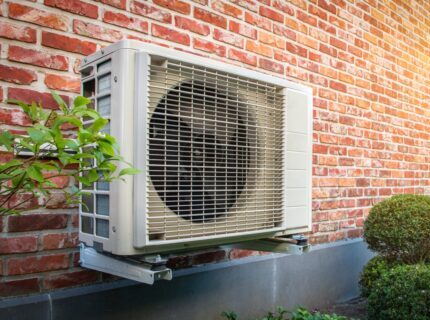Learn how to troubleshoot AC problems in this guide from 1st Class Heat & Air. We offer 10% off AC repair and have the skills to get the job done right!
We often seek solace inside heated buildings and cozy fireplaces during the winter months. In fact, the drop in temperatures across America can cause up to 90% of people to spend most of their time indoors. With all this extra time inside, poor indoor air quality can quickly cause problems like dry eyes, nasal congestion, and headaches.
Luckily, you can achieve a healthy home environment with a few quick fixes. Keep on reading to learn all you need to know about indoor air quality—from what it is— how to fix it—and everything in between. Breathe easy this winter and beyond with the experts at 1st Class Heat & Air!
What Is Indoor Air Quality?
Indoor air quality is the condition of the air inside a building and directly impacts the health and comfort of anyone who spends time there. Poor air quality can trigger health issues that arise after just a short time spent inside or build up over time, and the severity of symptoms may vary from home to home.
Some common symptoms of poor indoor air quality include:
- Dry or irritated eyes
- Dry or irritated skin
- Headache
- Fatigues
- Development or worsening of common colds or allergies
- Dizziness
- Shortness of breath
What Causes Poor Indoor Air Quality?
Often, the cause of poor indoor air quality is pollutants. Pollutants can come from various sources—from pet dander to volatile organic compounds. If you’re aware of what causes poor indoor air quality, you can better protect your home.
Some common causes that lead to poor indoor air quality include:
- Mold
- Smoking
- Pet dander
- Humidity levels that are too low or too high
- Combustion pollutants, like fireplaces, dryers, or gas stoves
- Volatile organic compounds (specific paint strippers, moth repellents, pesticides, etc.)
How Do I Test My Indoor Air Quality?
While we can’t control the outdoor air quality, we can maintain the inside of our homes. To test the level of contaminants in your home, you can purchase an indoor air quality monitor or track the symptoms of the people in your home. For example, if you find you’re getting headaches in your home office, but not in the kitchen, you can hone in on the source of your problem. However, the best way to test indoor air quality is by scheduling an air quality evaluation with a trusted HVAC expert.
A professional can evaluate your home, especially the hard-to-reach spots that most of us wouldn’t even consider, such as attics, ducts, and crawl spaces. Similarly, an expert can make recommendations to improve indoor air quality, like a humidifier or air purifier.
Can Indoor Plants Improve Indoor Air Quality?
While they are aesthetically pleasing, don’t expect your newest house plant to keep all the dirty air at bay. During photosynthesis, plants take in carbon dioxide while absorbing the harmful contaminants in the air. However, in various studies, indoor plants removed few pollutants and aren’t recommended as indoor air quality solutions.
What Else Can Improve My Indoor Air Quality?
Humidifiers & Dehumidifiers
There are several ways you can improve your indoor air quality. If you have a humidity problem, adding a humidifier or dehumidifier can stabilize your humidity levels. Low and high humidity levels can increase bacterial growth and support the spread of viruses, so your home humidity levels must stay within 30-50% for optimal air quality.
Air Duct Cleaning
Even if you clean your house regularly, dust, mites, and pet dander can still accumulate in your air ducts. As air passes through dirty HVAC ducts, your air conditioner will blow out contaminated air into your home. We recommend scheduling air duct cleaning every three to five years to ensure your air ducts are dust-free. Likewise, cleaning and replacing your air filters at the allotted time, usually every three months, can keep dust and grime from accumulating in your air.
Air Filters & Purifiers
If you’re worried about allergens, pollutants, and other harmful particles, air filters and purifiers can eliminate any pollutants in your home. These devices take in contaminated air, purify it, and then cycle out clean, fresh air for you and your family. There are various options on the market, including whole-house air purifiers.
Breathe Easy This Winter with 1st Class Heat & Air
This winter, keep your family safe from harmful air pollutants. From air purifiers to duct cleaning to air filters, there are various steps you can take to improve your indoor air quality for months to come. If you have questions about your indoor air quality or would like to schedule service, don’t hesitate to contact 1st Class Heat & Air. With years of experience, we’re the air quality experts you can trust!
Schedule 1st Class Service to Improve Your Indoor Air Quality
At 1st Class Heat & Air, we offer various solutions for all your HVAC needs, from improving air quality to repairs and installations. Proudly serving Plano, TX, we’d be honored to help you boost your air quality. Schedule your appointment by calling 972-351-8383 or requesting 1st Class Service online!

